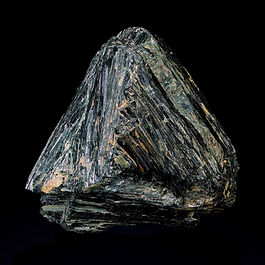
Specimen List
A | B | C | D | E | F | G | H | I | J | K | L | M | N | O | P | Q | R | S | T | U | V | W | X | Y | Z

Aegirine With Titanite & Clinozoisite
These three minerals commonly occur together in alkaline igneous rocks, metasomatic zones, and high-grade metamorphic environments. When they appear together on a specimen, the contrast of dark aegirine, honey-brown titanite, and pistachio-green clinozoisite is visually striking and highly collectible.

Brockman Jasper Slab
Brockman Jasper is a jasper (i.e. an opaque, microcrystalline or cryptocrystalline variety of quartz / chalcedony) associated with the Brockman Tiger Eye mine in Western Australia. Brockman Jasper is prized for its rich, varied coloration. Typical colors include yellows, reds, olive greens, sometimes blues and blacks.

Bruneau Jasper Slab
Bruneau Jasper is a variety of jasper, and more specifically a type of picture jasper. It shows layered / orb (egg-shaped) patterns of earthy tones — commonly browns, reddish browns, creams, and sometimes hints of red, green, or orange. The term “Bruneau” comes from the Bruneau River canyon in southwestern Idaho, U.S., where this jasper occurs.

Bumblebee Jasper Slab
Despite its name, Bumblebee Jasper is not a true jasper Instead, it is a silicified volcanic material composed mainly of Sulfur Arsenic Manganese oxides and pyrite. The banded yellow-orange-black patterns resemble the coloration of a bumblebee — hence the trade name. It’s only known source is an active volcano.































